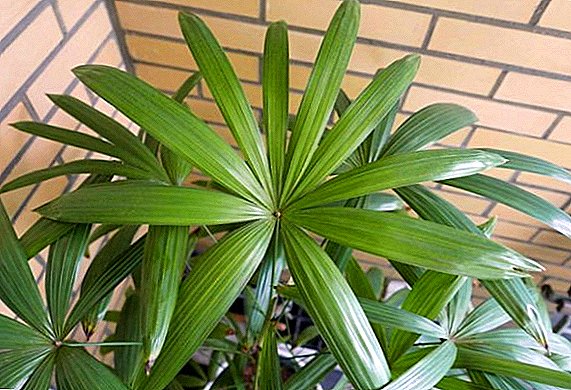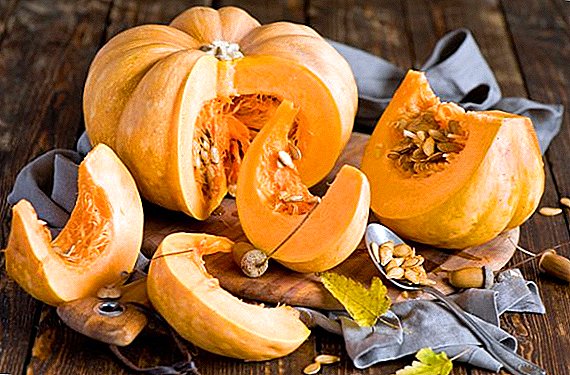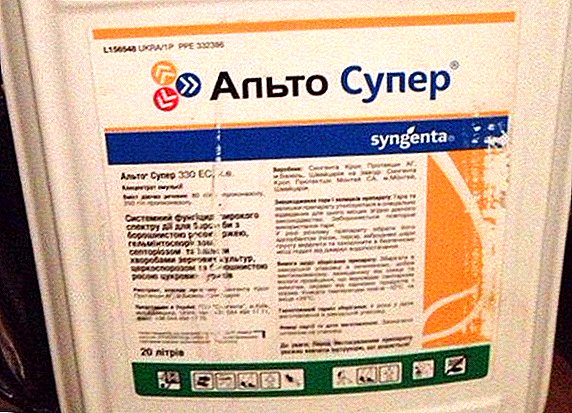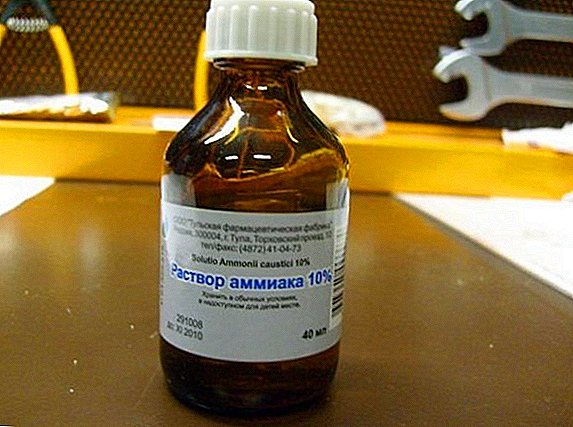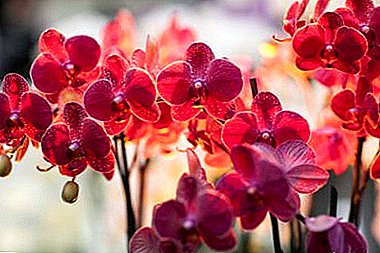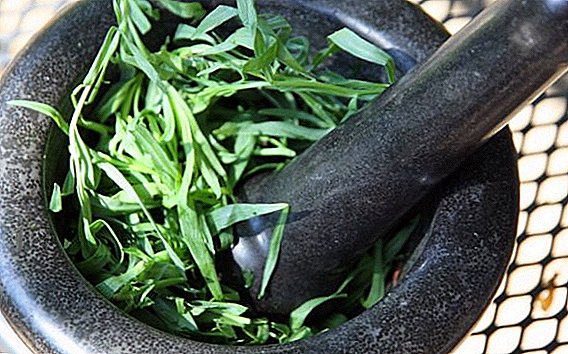 Many housewives are interested in what constitutes tarragon and for what purpose it is used. This plant is also called "tarragon grass"and it belongs to the genus Wormwood. This article will tell you about the beneficial properties of the plant, as well as about the diseases that can be cured with the help of this wonderful herb.
Many housewives are interested in what constitutes tarragon and for what purpose it is used. This plant is also called "tarragon grass"and it belongs to the genus Wormwood. This article will tell you about the beneficial properties of the plant, as well as about the diseases that can be cured with the help of this wonderful herb.
The chemical composition of tarragon
The chemical composition of the plant helps to understand in what area and under what diseases it can be used. So, for example, everyone knows phytoncides, which are in garlic. Only this fact makes it possible for the multilateral use of the plant.
Also, besides the useful sides, the chemical composition also tells about side effects or possible intolerance.
The composition of tarragon grass includes the following elements:
- carotene (antioxidant, reduces the risk of cancer);
- alkaloids (protect against disease and regulate vital processes);
- essential oils;
- flavonoids (antioxidant, has antimicrobial action);
- coumarin (dilutes the blood, prevents the formation of blood clots).
Important! With reduced blood clotting, it is not advisable to use tarragon, since its properties may aggravate the problem.
 Among the beneficial properties of tarragon -high content of vitamins A and C - more than 11%. Vitamin A is responsible for maintaining immunity and skin health, and vitamin C contributes to the strengthening and formation of the immune system.
Among the beneficial properties of tarragon -high content of vitamins A and C - more than 11%. Vitamin A is responsible for maintaining immunity and skin health, and vitamin C contributes to the strengthening and formation of the immune system.
Based on this, we can conclude that tarragon is excellent for strengthening the protective functions of the body and maintaining the skin and eyes in a healthy state.
Also in the composition of tarragon includes other vitamins (B1, B2, PP) and trace elements (potassium, magnesium, sodium, calcium and phosphorus).
The calorie tarragon is 24.8 kcal / 100 g.
The beneficial effects of tarragon grass on the body
Another name tarragon - "dragon wormwood". Its composition is rich in various vitamins, trace elements and oils, which have the following effects:
- antiscorbetic;
- diuretic;
- sedative;
- wound healing;
- anti-inflammatory;
- immunostimulating;
- antimicrobial and antiviral.
 In addition to the above, eating tarragon, you will reduce the chance of cancer, heart attack and stroke. In Tibetan medicine, dragon wormwood is used in the treatment of pneumonia and bronchitis as the main medicine. However, it should be remembered that each property is manifested with the proper use of the plant, whether it is a decoction or inhalation of essential oils.
In addition to the above, eating tarragon, you will reduce the chance of cancer, heart attack and stroke. In Tibetan medicine, dragon wormwood is used in the treatment of pneumonia and bronchitis as the main medicine. However, it should be remembered that each property is manifested with the proper use of the plant, whether it is a decoction or inhalation of essential oils.Did you know? Tarragon has the scientific name "Artemisia dracunculus", which is used to denote all kinds of wormwood and is derived from the Greek "artemes", which means "healthy."
Preparation and storage of raw tarragon for medical purposes
Even at the beginning of the first millennium, healers used tarragon as one of the main drugs in the treatment of many diseases. Nowadays, you can stock up on medicinal herbs not only for one or two months, but also for several years.
Properly collecting dragon sage from the budding phase. If you start sooner or later, all useful effect will be lost. All aboveground parts (leaves, stem, flowers) are suitable for collection and further use. The best collection time is morning or evening. Choose collection days so that there is no precipitation or high humidity.
Important! In the first year the collection is carried out in August or October. In the future - from April to October.
 The above-ground part is cut so that about 10 cm of stem remains above the ground. If you cut more, harm the plant.
The above-ground part is cut so that about 10 cm of stem remains above the ground. If you cut more, harm the plant.Immediately after collecting, place the tarragon in a dark cool place. Grass can be stored in the refrigerator, but no more than two weeks. After that, you need to put the raw materials for processing and further storage.
Before you choose a storage method, determine the purpose for which you are harvesting the plant. Since tea with salted tarhun you can not make, and tarragon in oil may not be suitable for medicinal purposes.
Let's start with the simplest method of storage - freezing. To do this, wash the harvested plant and dry (it is not advisable to use an electric dryer). Next, cut the tarragon into small pieces and place in plastic bags. Packages need to tie and freeze (the temperature should be no higher than minus 5-7 ˚C).
Important! The thawed portion does not re-freeze again, since most of the useful properties are lost.
This method of storage is universal. You can use the frozen product for cooking dishes and drinks, and for the treatment of various ailments. If the freezing of the product does not suit you, you can use other ways of storing grass.
 Dried tarragon. Dry it in open canopies so that the sun does not fall on the plant. Cut the plant folded in bunches and hung tops down. Drying does not take much time, as the grass does not contain much moisture. After drying, the leaves and shoots are crushed and stored in tightly closed jars (no need to roll up).
Dried tarragon. Dry it in open canopies so that the sun does not fall on the plant. Cut the plant folded in bunches and hung tops down. Drying does not take much time, as the grass does not contain much moisture. After drying, the leaves and shoots are crushed and stored in tightly closed jars (no need to roll up).
Salted tarragon narrows the intended use, but does not deprive the leaves and stalks of juices, as when drying. Greens are washed and laid out on a cloth to dry. After that, mixed with salt (200 g per 1 kg of tarragon grass) and tamped into glass jars of a small displacement. Cans are closed with silicone lids and stored in a cool place.
Other storage options:
- tarragon in oil;
- tarragon vinegar.
Recipes of traditional medicine
As mentioned above, tarragon in folk medicine is used to treat many diseases. Imagine the most common recipes for drugs based on tarragon herbs.
For the treatment of insomnia
The problem of insomnia and poor sleep is familiar to all generations. Sometimes this is a short-term problem, but it also happens that a person cannot sleep normally for months. Dragon wormwood (tarragon) is great for insomnia.
 To make a decoction, you will need dry tarragon. A tablespoon of herbs pour 300 ml of water and boil for 5-6 minutes. After this broth insist 1 hour and filter. At bedtime, soak a towel or gauze in medicine and place it on your forehead.
To make a decoction, you will need dry tarragon. A tablespoon of herbs pour 300 ml of water and boil for 5-6 minutes. After this broth insist 1 hour and filter. At bedtime, soak a towel or gauze in medicine and place it on your forehead.
Important! If you drink broth, which is intended for external use, the effect may be the opposite.
For the treatment of eczema and dermatitis
Estragon herb is suitable for treating problem skin.
For the preparation of the ointment is used only dried tarragon, which must be ground to a powder. After that, add honey (per 300 g of grass 100 g of honey) and mix thoroughly. The resulting ointment is applied to problem areas of the skin and gently rubbed. The course of treatment is unlimited, so you can use the ointment to obtain the desired effect.
For the treatment of neurosis
Tarragon has established itself as a sedative, therefore it is often used for various neuroses.
To prepare the broth take 1 tbsp. l dry tarragon and brewed 300 ml of boiling water. Insist about 50-60 minutes and filter. Infusion should be consumed 3-4 times a day, 100 ml after a meal.
 Before use, you should consult a doctor, as some drugs may reduce attention. If you are taking other drugs, you should check their compatibility with tarragon.
Before use, you should consult a doctor, as some drugs may reduce attention. If you are taking other drugs, you should check their compatibility with tarragon.
For the treatment of stomatitis
If there are problems with the gums or the mucous membrane of the mouth, then delay with the use of medicines. Ointment from dried tarragon will come to the rescue.
Mix finely chopped herb leaves (20 g) and 100 g of butter. We recommend using homemade butter, as there is no margarine in it. Cook the mixture on low heat for about 12-15 minutes.
Ointment should be rubbed into the gums at least 3 times a day to obtain a positive effect. Treatment must be continued for at least a month. If the disease has begun to progress, consult your dentist for allergic reactions or estragon intolerance.
To improve the appetite
Estragon herb enhances the formation of gastric juice, so it is used to improve appetite.
Did you know? In the past, in Germany, fresh tarragon rubbed meat and game so that flies did not sit on them.
To make a delicious tea, you will need:
- 1 tsp dry tarragon;
- 3 tsp. tea (green, black or herbal);
- 30 g pomegranate peel.
 Ingredients put in a cup and pour boiling water. Tea is infused for 10 minutes, after which you need to add more hot water and leave for 15 minutes. Ready tea is used as brewing. Add sugar or honey to the finished tarragon drink to taste.
Ingredients put in a cup and pour boiling water. Tea is infused for 10 minutes, after which you need to add more hot water and leave for 15 minutes. Ready tea is used as brewing. Add sugar or honey to the finished tarragon drink to taste.
To improve overall well-being
To improve overall health is recommended to take baths with tarragon. This therapy soothes the nervous system, cleanses the skin and removes toxins from the body. Brew dried leaves and shoots of tarragon herbs, let the brew stand and add to the filled bath. After bathing, you will feel light and clean, and the pleasant smell of essential oils will not only benefit, but also the pleasure of such a procedure.
With varicose veins
Frequent problem of people in age is solved with tarragon based compresses. On areas with swollen veins superimposed mixture of 2-3 tbsp. l chopped tarragon and 500-600 ml of freshly sour kefir (also recommend using homemade jelly).
 This compress is applied 2-3 times a day. Leave it on the skin to dry. Try not to keep the ointment for more than 6-7 hours so that the skin can breathe normally.
This compress is applied 2-3 times a day. Leave it on the skin to dry. Try not to keep the ointment for more than 6-7 hours so that the skin can breathe normally.
Important! If you are allergic to dairy products, consult a doctor before applying the ointment.
Estragon herb in the perfume industry
The use of tarragon in the perfume industry due to the presence of essential oils, which are a pale yellow or colorless liquid with aniseed odor.
Estragon herb is used by perfumers to give lightness and green grassy notes to spirits.
 At the same time, perfume with the addition of tarragon is valued all over the world, as it is produced on the basis of natural substances. Tarragon oils have an antimicrobial effect that is not lost when added to perfumes. In addition, the perfumes based on tarragon herbs have a persistent aroma that does not mix with foreign smells.
At the same time, perfume with the addition of tarragon is valued all over the world, as it is produced on the basis of natural substances. Tarragon oils have an antimicrobial effect that is not lost when added to perfumes. In addition, the perfumes based on tarragon herbs have a persistent aroma that does not mix with foreign smells.
Did you know? The French were the first to use tarragon in cooking, when this spice was brought to Europe in the 17th century. It was the French gourmets who invented the tarragon recipes.
The use of tarragon in cooking
Tarragon in cooking is used throughout the composition of a variety of dishes.
Apply a plant in the form of seasoning. Especially brightly taste of tarragon is expressed in combination with sour products. This plant becomes indispensable when you need to quickly make marinade or pickles. It contains substances that have antibacterial properties, which means that the pickled product will not deteriorate.
 Fresh and dried tarragon leaves are also served along with fried meat, steak, fried egg or fish. Crushed leaves are added to the first dishes: soups, okroshka and broths. Thus, the plant can be added to almost any dish without risking to spoil it.
Fresh and dried tarragon leaves are also served along with fried meat, steak, fried egg or fish. Crushed leaves are added to the first dishes: soups, okroshka and broths. Thus, the plant can be added to almost any dish without risking to spoil it.
We present a recipe based on tarragon herbs.
Chicken sauce with the addition of tarragon. Ingredients dishes:
- chicken fillet (3-4 pieces);
- 300 ml of chicken broth;
- 80-100 g dried tarragon;
- 120 ml of dry white wine;
- 200 ml of sour cream;
- 10 g of mustard;
- onions (1 head);
- garlic (to taste);
- salt pepper.
 Simmer for 15 minutes on low heat. 5 minutes before readiness add sour cream, tarragon and mustard. Stir several times during cooking. Add salt and pepper at the end of cooking.
Simmer for 15 minutes on low heat. 5 minutes before readiness add sour cream, tarragon and mustard. Stir several times during cooking. Add salt and pepper at the end of cooking.
In addition to recipes and instructions, you need to remember a few tricks of the use of tarragon in cooking:
- In cooking, only dried, pickled or salted tarragon is used. Fresh plant will give only bitterness (during heat treatment).
- On the basis of tarragon can make vodka (in a bottle for a few weeks put a sprig of dried tarragon). As a result, alcohol will smell and taste of wild berries.
- Tarragon is used to add a spicy smell to wine vinegar. To do this, add the capacity of the plant leaves. As a result, you will get an unusual smell and slightly sharp taste.
- Estragon herb must be added to the dish 5-7 minutes before it is cooked, in order to preserve the healthy properties and taste of the spice.
How to make a drink of tarragon herbs at home
Lemonade "Tarragon" is familiar to both adults and children. The taste of soda is due to tarragon, which is included in its composition. It is easy to make a delicious, and most importantly, healthy drink from tarragon herbs at home.
To make lemonade you will need the following ingredients:
- 1 liter of carbonated mineral water;
- 1 lemon;
- a large bunch of green tarragon.
Important! Lemon can be reduced if you do not tolerate sour foods.
The second version of "Tarragon" - with the addition of lemon balm and kiwi. For a cocktail, we need:
- 500 ml of mineral water;
- 300 ml of water for syrup;
- fresh tarragon (up to 100 g);
- 4 leaves of lemon balm;
- 1 lime;
- 2 Kiwis;
- sugar.
In addition to the traditional drink, the plant makes all sorts of cocktails. Tarragon is also added to liqueurs, tinctures and whiskey.
Contraindications to the use of tarragon
We will discuss the possible contraindications of tarhuna and side effects after its use.
Earlier we learned that tarragon can fight cancer, but its long-term use as a seasoning (in large quantities) can lead to the formation of cancer. The reason may be the substance methyl chavicol, which is contained in the composition of the plant.
 If you are allergic to chrysanthemums or daisies, then tarragon consumption will cause a similar reaction, as the plant belongs to the same family.
If you are allergic to chrysanthemums or daisies, then tarragon consumption will cause a similar reaction, as the plant belongs to the same family.
Estragon herb is contraindicated in cholelithiasis and diseases of the urinary tract. Although estragon promotes the release of stones from the gallbladder, their movement can lead to serious consequences.
It is forbidden to use the plant in any form during pregnancy. The composition of tarragon includes thujone, which can cause the loss of a child or deprive a woman in labor of milk.
Use tarragon with caution. In addition to the healing properties, consider the contraindications of tarragon, which can cause more harm than good. Remember that any medicine can turn into poison if you use it thoughtlessly.



